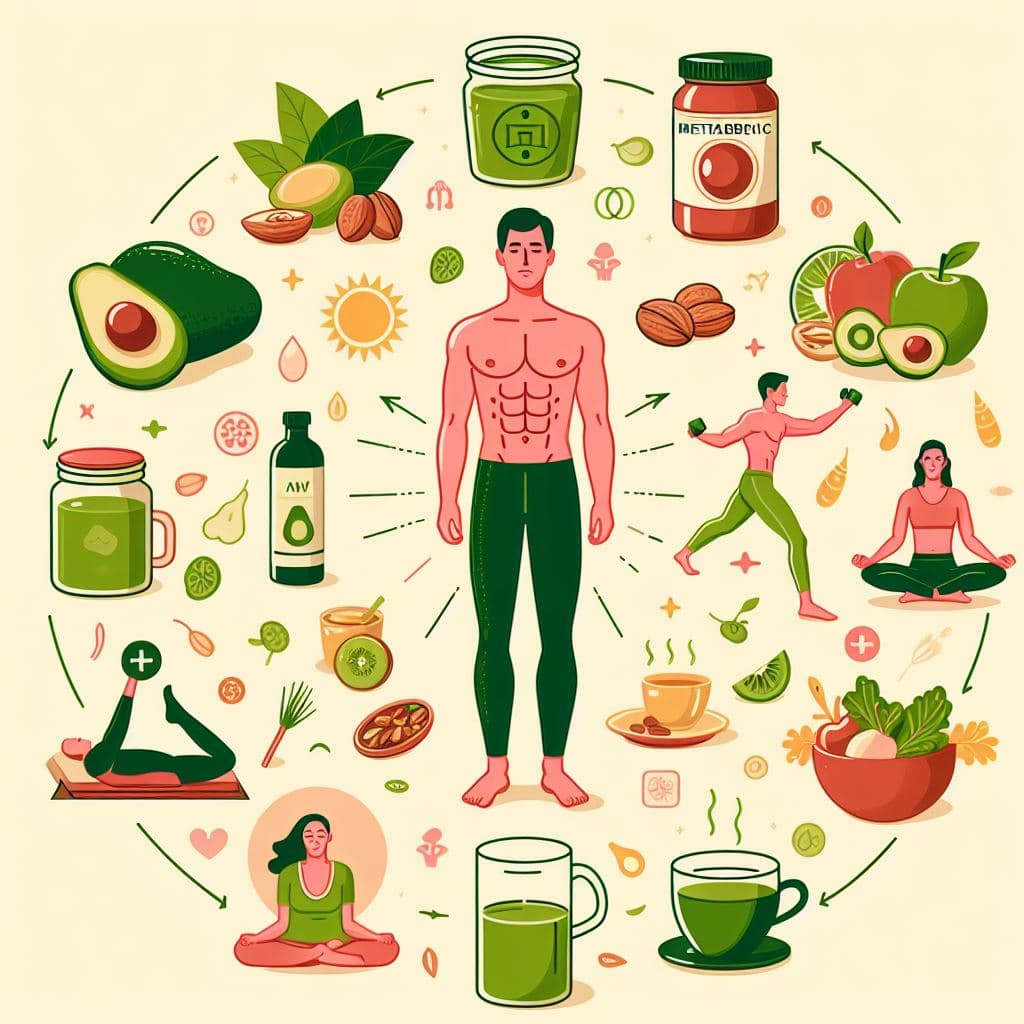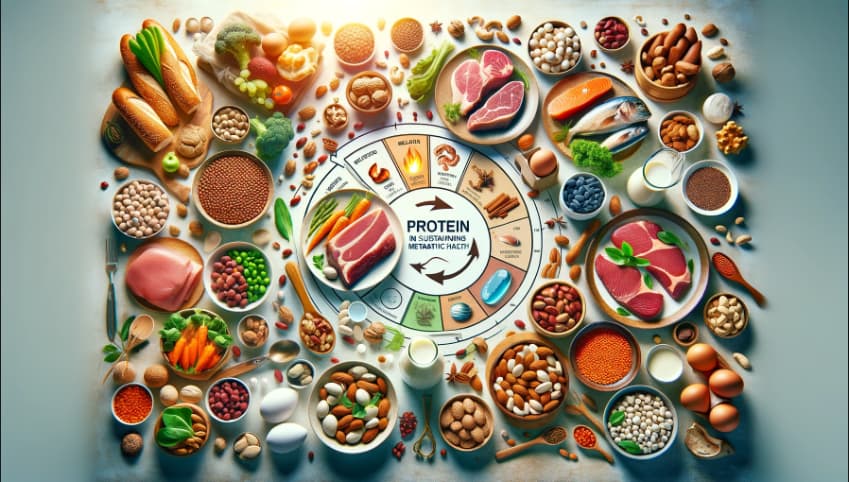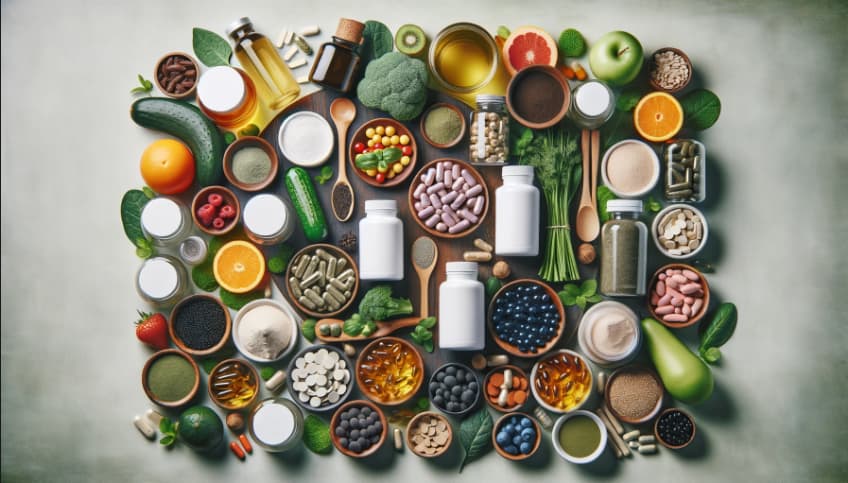How To Boost Metabolism After 40? As we transition into our 40s, a subtle yet undeniable shift occurs in how our bodies handle calories and energy. T
his period often brings about a noticeable change in metabolism, the biological engine that powers every action from cellular processes to physical exertion.
The once straightforward equation of “calories in, calories out” begins to blur, leaving many to wonder why their tried-and-true dietary habits and exercise routines no longer yield the same results.
The Metabolic Shift at 40
Metabolism, fundamentally, is the sum of all chemical reactions within our body that sustain life. It’s the mechanism that transforms the food we eat into the fuel that powers everything we do.
In our younger years, this engine runs at peak efficiency, easily adapting to the demands we place on it. However, as we hit the 40-year mark, several factors conspire to slow this metabolic machinery.
Hormonal Changes
One of the primary drivers behind this metabolic slowdown is hormonal change. For women, perimenopause begins to set the stage for menopause, marked by fluctuations in estrogen levels.
These hormonal shifts can impact how the body metabolizes fats and carbohydrates, often leading to weight gain, particularly around the midsection.
Men are not immune to hormonal changes either. Testosterone levels gradually decline, which can reduce muscle mass and slow metabolism.
This change, often referred to as andropause or “male menopause,” mirrors the metabolic and physical changes seen in women, albeit more subtly.
Muscle Mass Decline
Muscle tissue is metabolically active, meaning it burns calories even at rest. As we age, there’s a natural tendency for muscle mass to decrease, a condition known as sarcopenia.
This reduction in muscle tissue directly impacts metabolic rate, as less muscle means fewer calories burned throughout the day.
Lifestyle Factors
The 40s are often a time of increased responsibility and stress, with career demands, family life, and other obligations. These pressures can lead to less physical activity and poorer dietary choices, further exacerbating the metabolic slowdown.
Boosting Metabolism After 40
Despite these challenges, it’s entirely possible to rev up your metabolism even after the age of 40. The key lies in understanding these changes and adapting your health strategies to align with your body’s evolving needs.
- Resistance Training: Combat muscle loss with regular strength training exercises. Lifting weights or engaging in bodyweight exercises can help build and maintain muscle mass, keeping your metabolism brisk.
- Balanced Diet: Focus on a nutrient-rich diet that includes plenty of protein to support muscle health, alongside fiber-filled fruits and vegetables to aid digestion and metabolism.
- Regular Physical Activity: Incorporate aerobic activities, such as walking, cycling, or swimming, to boost heart health and burn calories.
- Stress Management: Techniques like yoga, meditation, and deep breathing can help manage stress, which is known to affect hormonal balance and, by extension, metabolism.
- Adequate Sleep: Ensure you’re getting enough restorative sleep, as sleep deprivation can disrupt metabolic hormones and lead to weight gain.
Embracing these changes and adopting new health strategies can not only enhance your metabolism but also improve your overall well-being as you navigate this vibrant chapter of life.
1. Nutritional Adjustments for Enhanced Metabolism
As we cross the threshold into our 40s, the reality of a changing metabolism becomes more apparent. No longer can we rely on the dietary indulgences of our younger years without seeing the consequences on our waistlines.
The crux of the matter lies in how our bodies process the food we consume. Metabolism, the biochemical process of converting food into energy, undergoes significant changes due to age-related factors such as hormonal shifts and muscle mass decline.
The Role of Protein in Sustaining Metabolic Health
Protein plays a pivotal role in maintaining a robust metabolism. It’s not just about building and repairing muscle tissue; protein has a higher thermic effect compared to fats and carbohydrates.
This means your body uses more energy to digest, absorb, and metabolize protein, giving your metabolism a slight nudge with every protein-rich meal.
Practical Tips:
- Increase Your Protein Intake: Aim to include a source of lean protein at every meal. Think beyond meat—lentils, beans, tofu, and quinoa are excellent plant-based options.
- Distribute Protein Evenly: Instead of loading up on protein in one meal, distribute it evenly throughout the day to keep your metabolism consistently engaged.
The Importance of Fiber-Rich Carbohydrates
Carbohydrates are often vilified in the dieting world, but not all carbs are created equal. Fiber-rich, complex carbohydrates from whole grains, vegetables, and fruits play a crucial role in metabolic health.
They provide a sustained energy release, keeping blood sugar levels stable and preventing the insulin spikes associated with refined carbs.
Smart Carb Strategies:
- Choose Whole Grains: Swap out white bread and pasta for their whole-grain counterparts.
- Snack on Vegetables and Fruits: These natural snacks are packed with fiber and essential nutrients.
Fats That Fuel Metabolism
Not all fats are foes of metabolism. Monounsaturated and polyunsaturated fats, found in avocados, nuts, seeds, and oily fish, can support metabolic health.
These healthy fats help maintain cell integrity and hormone balance, crucial for a well-functioning metabolism.
Tips for Healthy Fats:
- Incorporate Avocado: Add slices of avocado to salads or sandwiches for a healthy fat boost.
- Choose Oily Fish: Salmon, mackerel, and sardines are excellent sources of omega-3 fatty acids.
Hydration: The Unsung Hero of Metabolism
Water is essential for life, and its role in metabolism is often underestimated. Adequate hydration ensures that your body’s biochemical processes, including metabolism, run smoothly.
Even mild dehydration can slow down metabolism as your body tries to conserve resources.
Hydration Tips:
- Drink Regularly: Keep a water bottle handy and sip throughout the day, not just when you’re thirsty.
- Eat Water-Rich Foods: Cucumbers, tomatoes, and watermelons can contribute to your daily water intake.
Struggle to meet your daily protein needs? Liv Pure offers top-notch protein supplements that fit right into your busy lifestyle. Click Here
2. The Power of Resistance Training in Metabolic Revitalization
Entering our 40s brings many changes, and among them is how our bodies respond to exercise. The once-dreaded muscle soreness after a workout session becomes a badge of honor, signaling our commitment to maintaining vitality and vigor.
But beyond the immediate gratification of feeling fit, resistance training holds the key to revving up a slowing metabolism—a common challenge in this stage of life.
Building Muscle to Stoke Metabolic Fires
Muscle mass is a significant driver of metabolic rate. More muscle means more energy expenditure, even when at rest.
natural decline in muscle mass as we age, known as sarcopenia, is a primary culprit in the slowing of metabolic rates observed in later years.
However, this is not an irreversible fate. Resistance training, or strength training, offers a powerful countermeasure to this decline, enabling the building and maintenance of muscle, thereby giving metabolism the boost it needs.
Key Strategies for Effective Resistance Training:
- Consistency Over Intensity: Start with manageable weights and focus on regular training sessions. Consistency leads to gradual strength gains without the risk of injury.
- Full-Body Workouts: Engage all major muscle groups through compound exercises like squats, deadlifts, bench presses, and rows. This approach ensures balanced strength development and maximizes metabolic impact.
- Progressive Overload: Gradually increase the weight or resistance as your strength improves. This principle keeps your muscles challenged and growing, which in turn keeps your metabolism active.
The Role of Resistance Training in Counteracting Age-Related Metabolic Slowdown
As we age, not only does muscle mass decrease, but the body’s ability to efficiently burn calories also diminishes.
Resistance training combats this by enhancing muscle efficiency and increasing the number of calories burnt during and after exercise, a phenomenon known as excess post-exercise oxygen consumption (EPOC).
Incorporating Resistance Training Into Your Routine:
- Start with Guidance: For beginners, consulting with a fitness professional can provide a solid foundation in resistance training techniques and safety.
- Home Workouts: Investing in basic equipment like dumbbells or resistance bands can enable effective home workouts, making it easier to integrate strength training into a busy schedule.
New to resistance training? Critical Bench offers beginner-friendly workouts tailored for the 40+ crowd.
3. Harnessing the Power of High-Intensity Interval Training (HIIT)
As we navigate our 40s, the quest for time-efficient and effective workout regimes becomes paramount.
Enter High-Intensity Interval Training, or HIIT, a powerful ally in the battle against the metabolic slowdown that accompanies aging.
HIIT’s allure lies in its ability to deliver significant health and fitness benefits within a condensed timeframe, making it an ideal choice for the time-constrained adult.
The Metabolic Magic of HIIT
HIIT consists of short bursts of intense exercise alternated with low-intensity recovery periods.
This method not only maximizes calorie burn within a limited session but also stimulates a prolonged afterburn effect, known as excess post-exercise oxygen consumption (EPOC).
The result is an elevated metabolic rate that continues long after the workout has concluded, a boon for those seeking to optimize their metabolic health.
Example of a HIIT Session:
- Warm-Up: 5 minutes of light jogging or brisk walking to prepare the body for intense activity.
- HIIT Circuit: Alternate 30 seconds of sprinting with 1 minute of walking or slow jogging. Repeat for 15-20 minutes.
- Cool Down: 5 minutes of gradual reduction in intensity, ending with stretching to aid recovery.
Customizing HIIT for the Over-40 Population
While HIIT is adaptable and scalable to various fitness levels, those in their 40s and beyond should approach it with mindfulness to avoid injury and ensure sustainability.
Tailoring HIIT to Individual Needs:
- Start Slow: Begin with shorter intervals of high-intensity effort and longer recovery periods, gradually adjusting as fitness improves.
- Low-Impact Options: Opt for low-impact HIIT exercises like cycling, swimming, or using an elliptical machine to minimize stress on joints.
- Listen to Your Body: Pay attention to your body’s signals. Rest when needed and consult with a healthcare provider if you have any pre-existing conditions.
4. Lifestyle Tweaks to Keep Metabolism Humming
Prioritizing Sleep for Metabolic Health
The importance of sleep extends far beyond mere rest. Quality sleep is a cornerstone of metabolic health, influencing hormone regulation, appetite control, and even insulin sensitivity.
Disrupted or inadequate sleep can lead to increased hunger and appetite, making weight management more challenging.
Example: A study published in the “Annals of Internal Medicine” found that when dieters got a full night’s sleep, more than half of the weight they lost was fat.
When they cut back on sleep, the amount of fat lost was cut in half, even though their calorie intake remained constant.
Stress Management Techniques
Chronic stress can derail metabolic health by elevating cortisol levels, which in turn can promote fat storage, particularly in the abdominal area.
Incorporating stress-reduction practices such as yoga, meditation, or even simple deep-breathing exercises can help mitigate these effects.
Example: Engaging in a daily 10-minute meditation session using apps like Headspace or Calm can significantly reduce stress levels, promoting a more balanced metabolic state.
Discover the ultimate relaxation with LivPure, from soothing essential oils to guided meditation apps.
5. Hydration and Thermogenesis
The Role of Water in Metabolism
Water is not just essential for survival; it plays a pivotal role in maintaining a healthy metabolism. Even mild dehydration can slow down metabolic processes, whereas adequate hydration has been shown to increase the resting metabolic rate.
Example: A study in the “Journal of Clinical Endocrinology and Metabolism” found that drinking 500 milliliters of water increased metabolic rate by 30% within 10 minutes of consumption and the effect lasted for more than an hour.
Thermogenic Effects of Green Tea and Coffee
Both green tea and coffee possess natural compounds that can enhance thermogenesis—the body’s process of producing heat from digesting food.
Caffeine in coffee and catechins in green tea can slightly increase the number of calories your body burns.
Example: Regularly consuming green tea or coffee can contribute to an increased metabolic rate.
For instance, a cup of green tea might increase your metabolism by 4-5%, a subtle but helpful boost in daily calorie expenditure.
Enhance your hydration with Eco-Friendly Water Bottle, while Tea Burn offers a selection of metabolism-boosting herbal teas.
6. The Role of Supplements in Metabolic Support
While no supplement can replace a balanced diet and regular exercise, certain nutrients and compounds can support metabolic health.
Omega-3 Fatty Acids
Omega-3 supplements, often derived from fish oil, can influence metabolic rates by reducing inflammation and enhancing fat oxidation.
Example: Incorporating omega-3 supplements into your diet can improve body composition by enhancing the body’s ability to burn fat as an energy source.
Green Tea Extract
Rich in catechins, green tea extract supplements can boost metabolism and aid in weight loss efforts by increasing fat oxidation.
Example: A meta-analysis of studies found that green tea extract, especially when combined with caffeine, significantly increased calorie expenditure and fat burning.
Safe and Informed Use of Supplements
It’s crucial to approach supplementation with caution, prioritizing quality and safety. Always consult with a healthcare professional before adding new supplements to your regimen, especially if you have underlying health conditions or are taking medications.
For trusted supplement choices, turn to the Smoothie diet, known for its quality and efficacy.
Conclusion:
As we draw the threads of our discussion to a close, it’s clear that boosting metabolism after 40 is akin to rediscovering a harmonious symphony within our bodies.
It’s about more than just ticking boxes; it’s about weaving together the rich tapestries of balanced nutrition, invigorating physical activity, restorative sleep, and serene stress management into a vibrant mosaic of well-being.
Each element, a stroke of color, adds depth and vitality to our daily existence, painting a portrait of health that radiates from the inside out.
This journey isn’t merely a path to a more efficient metabolism; it’s an invitation to a fuller, more vibrant life. It’s an opportunity to align our actions with our deepest desires for health, vitality, and joy.
With every mindful choice, we fan the flames of our inner vitality, bringing warmth and light to our days.
So, as we step forward from this moment, armed with knowledge and inspired by the potential for transformation, let’s pause and reflect.
In the grand tapestry of your life, which thread will you choose to weave with intention today, to bring forth the radiant health that’s waiting to emerge?
Ready to jumpstart your metabolism? Start by exploring Liv Pure and take the first step towards a more energetic you. Share this guide with friends and family who are on the same journey, and let’s tackle those metabolic myths together.
Frequently Asked Questions
Recent Posts
- How To Boost Metabolism After 40: Reignite Your Vitality
- Metabolic Vitamins – Boosting Metabolism Naturally
- Endomorph Diet and Workout Plan: Unlocking Success
- Why is water so important for metabolic reactions?
- Vertical Diet Meal Plan: Elevate Performance, Boost Energy









